Premium Only Content

Storm Chasers Retreated From This Storm
Get emergency supplies on Amazon here... https://geni.us/vcdPwpf
https://www.amazon.com/shop/petervonpanda
Join this channel to help me bring you more vids...
https://www.youtube.com/channel/UCS-ix9RRO7OJdspbgaGOFiA/join
Join the free von Panda group here... https://panda-research-institute.mn.co
Get Peter von Panda gear here... https://petervonpanda.storenvy.com/
Instagram... https://www.instagram.com/petervonpanda/
As an Amazon Associate I earn from qualifying purchases.
Get Peter von Panda apparel here... https://petervonpanda.storenvy.com
Storm chasing is broadly defined as the pursuit of any severe weather condition, regardless of motive, which can be curiosity, adventure, scientific investigation, or for news or media coverage.[1]
A person who chases storms is known as a storm chaser, or simply a chaser. While witnessing a tornado is the single biggest objective for most chasers, many chase thunderstorms and delight in viewing cumulonimbus and related cloud structures, watching a barrage of hail and lightning, and seeing what skyscapes unfold. There are also a smaller number of storm chasers who intercept tropical cyclones and waterspouts.[2]
Chasers also carry common travel articles and vehicle maintenance items, and sometimes first aid kits. Full sized spare tires are strongly preferable to "donut" emergency replacement tires. Power inverters (often with surged protected power strips) power devices that require AC (indoor/wall outlet) power, although some devices may be powered directly with DC (battery power) from the vehicle electric system. Water repellent products, such as Rain-X or Aquapel, are frequently applied to windshields to dispel water when driving as well as mud and small detritus, which boosts visibility and image clarity on photographs and videos shot through glass (which is particularly problematic if autofocus is on). Binoculars and sunglasses are commonly employed.
Storm chasing is chiefly a recreational endeavor, with motives usually given toward photographing or videoing the storm and for multivariate personal reasons.[3] These can include the beauty of views afforded by the sky and land, the mystery of not knowing precisely what will unfold and the quest to undetermined destination on the open road, intangible experiences such as feeling one with a much larger and powerful natural world,[4] the challenge of correctly forecasting and intercepting storms with the optimal vantage points,[5] and pure thrill seeking.[6] Pecuniary interests and competition may also be components; in contrast, camaraderie is common.
Although scientific work is sometimes cited as a goal, direct participation in such work is almost always impractical except for those collaborating in an organized university or government project.[7] Many chasers also are storm spotters, reporting their observations of hazardous weather to relevant authorities. These reports greatly benefit real-time warnings with ground truth information as well as science by increasing the reliability of severe storm databases used in climatology and other research (which ultimately boosts forecast and warning skill).[8] Additionally, many recreational chasers submit photos and videos to researchers as well as to the National Weather Service (NWS) for spotter training.[9]
Storm chasers are not generally paid to chase, with the exception of television media crews in certain television market areas, video stringers and photographers (freelancers mostly, but some staff), and researchers such as graduate meteorologists and professors. An increasing number sell storm videos and pictures and manage to make a profit. A few operate "chase tour" services, making storm chasing a recently developed niche tourism.[10][11] Financial returns usually are relatively meager given the expenses with most chasers spending more than they take in and very few making a living solely from chasing.
No degree or certification is required to be a storm chaser. Local National Weather Service offices do hold storm spotter training classes, usually early in the spring.[12] Some offices collaborate to produce severe weather workshops oriented toward operational meteorologists.
Storm chasers come from a wide variety of occupational and socioeconomic backgrounds. A fair number are meteorologists, however, most storm chasers may be from any number of occupational fields that have little or nothing to do with meteorology. A large majority of chasers are male and white but a minority are female or of Asian or other descents. The average age is probably around 35 but chasers could theoretically be of any age. A relatively high proportion possess college degrees and a large number live in the central and southern U.S. Many are lovers of nature with interests that also include flora, fauna, volcanoes, aurora, meteors, eclipses, and astronomy.[2]
-
 8:50
8:50
Peter von Panda
1 year agoV-Line Under Desk Safe Has A Cool Lock
1.17K1 -
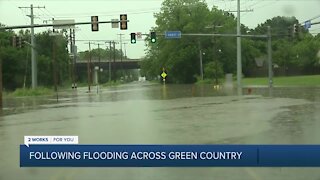 1:14
1:14
KJRH
3 years agoFlash flooding from our storm chasers
48 -
 17:15
17:15
RyanRlives
3 years agoChasing tornadoes in Storm Chasers!
67 -
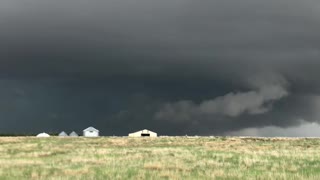 0:05
0:05
ViralHog
3 years ago $0.06 earnedStorm Chasers Capture Huge Storm Supercell
435 -
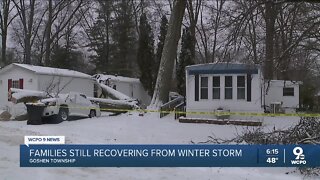 2:31
2:31
WCPO
2 years agoFamilies still recovering from winter storm
9 -
 2:47
2:47
WFTX
3 years agoProtecting your home from excessive storm damage
2 -
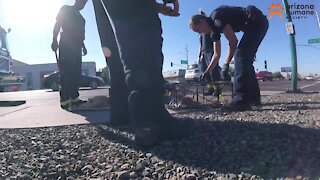 1:48
1:48
KNXV
3 years agoKitten rescued from Phoenix storm drain
11 -
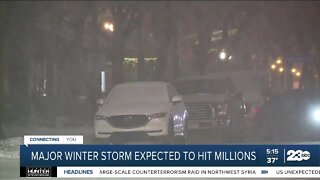 2:02
2:02
KERO
2 years agoWinter storm stretches from Texas to Maine
18 -
 1:58
1:58
WMAR
3 years agoRecovering from the storm in Annapolis
2 -
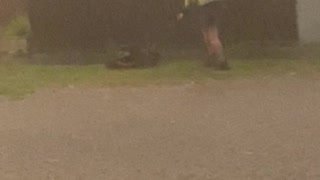 0:24
0:24
ViralHog
3 years ago $5.03 earnedMassive Storm Doesn’t Stop Man From Mowing
3.82K12